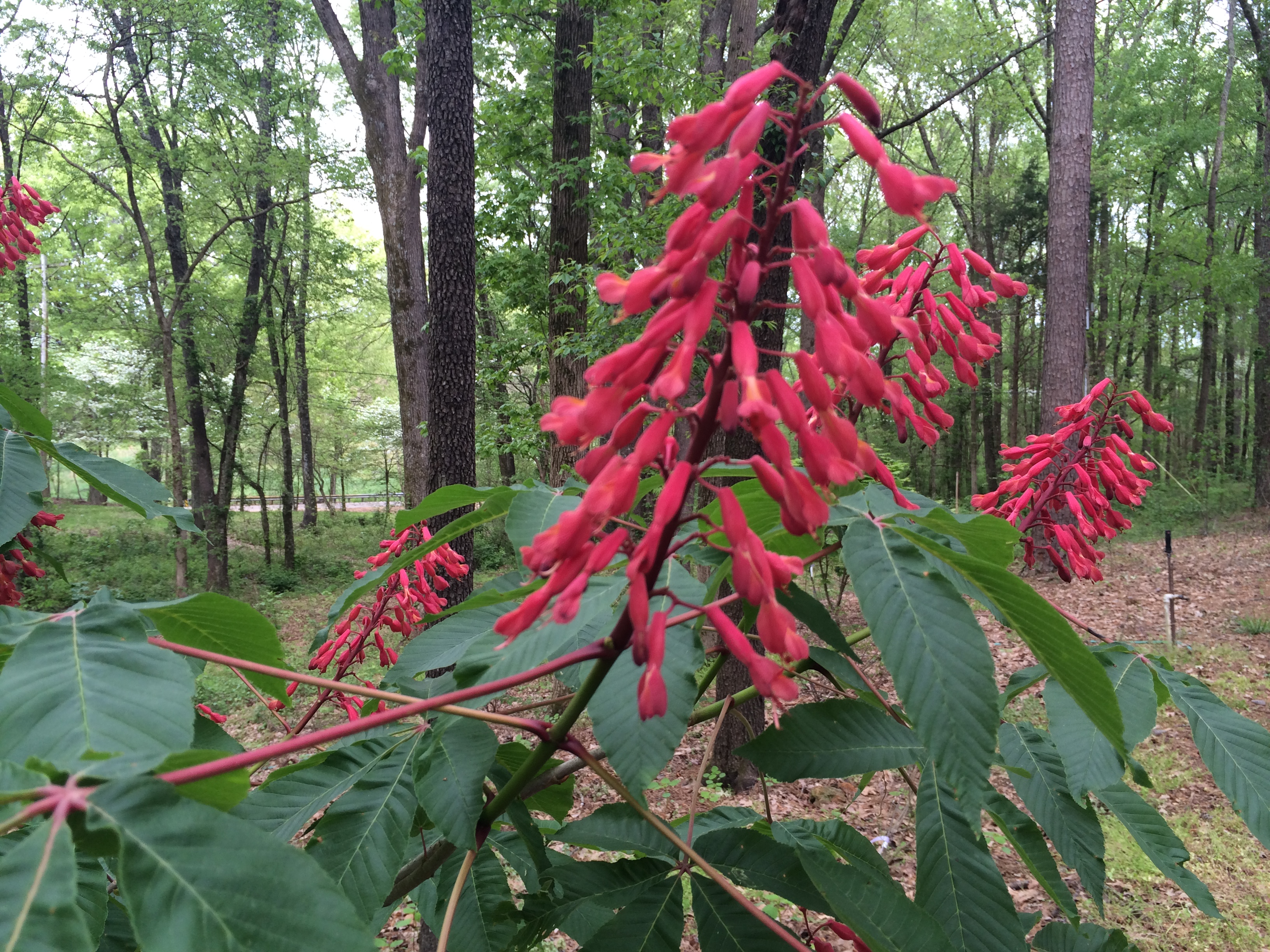Buckeye bush / Loretta Gillespie
I knew that buckeye bushes grew in Alabama, and that they had beautiful red flowers, but I never would have seen them up close, in the wild, if it hadn’t been for an interview I did in Limestone County last year.
Aesculus pavia, known as red buckeye or firecracker plant, is a species of deciduous flowering plant. The ones I saw were growing along the banks of a little tributary of the Elk River. There were so many that I couldn’t count them. They ran in a meandering line on either side of the water, hanging down gracefully, just blooming their hearts out in the middle of nowhere, not caring one bit that no one was around see the show, although they would have stopped traffic on a city street, they were so striking.
The red buckeye is a large shrub or small tree. It reaches a height of 16–26 feet, often growing in a multi-stemmed form. Its leaves are opposite, and are composed usually of five elliptical serrated leaflets, each 4–6 inches long. It bears 4–7-inch-long clusters of attractive dark red tubular flowers in the spring.
It has many local names, such as scarlet buckeye, woolly buckeye and firecracker plant.
The two varieties are:
Aesculus pavia var. pavia: typical red buckeye
Aesculus pavia var. flavescens: yellow-flowered red buckeye
The flowers are attractive to hummingbirds as well as bees. The fruits are rich in saponins, which are poisonous to humans.
The buckeye- the official tree of the state of Ohio, and known botanically as aesculus- is a genus of trees in the horse chestnut family. They are prized for their shade canopy, spring flowers and large leaves that provide shade in the summer and then bright fall and winter color.
It grows successfully when transplanted carefully. Buckeye trees readily reproduce by seed and have approximately a 50 percent germination rate with proper planting and cultivation. They are also great for shady gardens, for beginning gardeners and for people who love naturalized gardens.
Starting from seed; Buckeye seeds will ripen and start hitting the ground in September and October and should be collected and planted immediately. The longer you wait, the lower your chances of successfully germinating the seed.
Loosen the soil in the buckeye planting area by digging into it with a shovel or garden fork to a depth of 10 inches.
Plant the buckeye seed into the soil, to a depth of about 2 inches. Add a 3-inch layer of straw over the mesh* to keep the soil and the seed in place over the winter.
Rake the straw back when the soil thaws in the spring, being careful not to disturb the seed.
Keep the soil moist until the buckeye tree seed germinates. Once it sprouts, supply the seedling about an inch of water per week.
Shade the seedling during the hottest part of the summer to prevent leaf scorch.
As with most plants, you should discontinue fertilizing in mid-August to discourage new growth that could be damaged by an early frost.
*If squirrels and gophers are a problem, you can cover your seed with soil then top it with a screen mesh to protect it.
Copyright 2017 Humble Roots, LLC. All Rights Reserved.


























